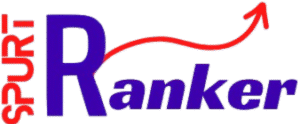Have you ever felt lost in a website with too many sections? It can be quite confusing! That’s where anchor panels come in handy. They help organize content in a way that’s easy to navigate. In this article, we’ll explore the anchor panel in PrimeVue, a popular framework for building user-friendly web applications.
What is PrimeVue?
PrimeVue is a library that gives developers ready-made components to create beautiful applications. These components can be buttons, forms, tables, and many more. Among these components, the anchor panel stands out because it allows you to group information neatly. If you’ve ever wanted to make your website easier to use, the anchor panel might just be what you need!
Why Use Anchor Panels?
When you build a website, one of your goals is to keep visitors engaged. You want them to find what they’re looking for quickly. Anchor panels help you achieve this by grouping related information. Imagine you’re visiting a library. If all the books were scattered around, finding a specific one would be a nightmare! Anchor panels act like shelves, organizing information so it’s easy to find.
Creating a User-Friendly Experience
User experience (or UX) is a big deal in web design. It’s all about how easy and enjoyable it is for visitors to use your site. Using anchor panels can greatly improve UX. By breaking content into smaller, manageable pieces, users can easily navigate through different sections without feeling overwhelmed.
For example, if you have a recipe website, you could use anchor panels to separate ingredients, steps, and tips. This way, visitors can jump to the part they want without scrolling endlessly.
Visual Appeal
Aside from being functional, anchor panels also make your site look neat and organized. When users visit a website, they first notice how it looks. If everything is messy, they might leave before even checking out your content. With anchor panels, you can create a polished appearance that invites users to explore more.
How to Implement Anchor Panel in PrimeVue
Let’s dive into how you can set up an anchor panel using PrimeVue. Don’t worry; it’s simpler than it sounds!
Step 1: Setting Up Your Environment
Before you start, ensure you have a basic setup for a Vue.js project. If you’re new to this, don’t worry! There are many tutorials online to help you get started. Once you have Vue set up, you’ll need to install PrimeVue. You can do this easily by running a command in your terminal:
bashCopy codenpm install primevue --save
Step 2: Importing the Anchor Panel Component
Now that you have PrimeVue installed, it’s time to bring in the anchor panel component. In your main JavaScript file, you can import it like this:
javascriptCopy codeimport 'primevue/resources/themes/saga-blue/theme.css';
import 'primevue/resources/primevue.min.css';
import 'primeicons/primeicons.css';
import { createApp } from 'vue';
import App from './App.vue';
import Accordion from 'primevue/accordion';
import AccordionTab from 'primevue/accordiontab';
const app = createApp(App);
app.component('Accordion', Accordion);
app.component('AccordionTab', AccordionTab);
app.mount('#app');
Step 3: Using the Anchor Panel in Your Template
Now that your anchor panel is set up, you can use it in your template. Here’s a simple example of how to create an anchor panel:
htmlCopy code<template>
<Accordion>
<AccordionTab header="Section 1">
<p>This is the content for section 1.</p>
</AccordionTab>
<AccordionTab header="Section 2">
<p>This is the content for section 2.</p>
</AccordionTab>
<AccordionTab header="Section 3">
<p>This is the content for section 3.</p>
</AccordionTab>
</Accordion>
</template>
In this example, you have three sections in your anchor panel. Each section can contain different content. You can click on the headers to expand or collapse the sections, making it fun and easy to explore!
Step 4: Adding Style
One of the best things about using PrimeVue is the ability to style your components easily. You can customize the look of your anchor panel by adding some CSS. For example:
cssCopy code.accordion-header {
background-color: #f0f0f0;
font-size: 18px;
padding: 10px;
}
.accordion-content {
padding: 15px;
border: 1px solid #ccc;
}
This CSS snippet changes the background color of the headers and adds padding for a more comfortable look.
Best Practices for Using Anchor Panels
Keep It Simple
When creating an anchor panel, less is often more. If you add too many sections, it can become overwhelming for users. Aim for clarity by limiting the number of sections and ensuring each has a clear purpose.
Label Clearly
Use simple and descriptive labels for each section. This way, users immediately understand what they’ll find inside. For example, instead of “Section 1,” use “Ingredients” if you’re making a recipe panel.
Test with Real Users
After setting up your anchor panel, it’s essential to test it. Ask friends or family to use your website and gather their feedback. Are they able to navigate easily? Are there any confusing parts? This feedback is crucial for improving your design.
Common Mistakes to Avoid
Overcomplicating the Design
It’s easy to get carried away with fancy designs, but sometimes simplicity works best. Overly complicated anchor panels can confuse users instead of helping them. Stick to a clean, straightforward design.
Ignoring Mobile Users
With more people using their phones to browse the internet, it’s essential to ensure your anchor panels work well on mobile devices. Make sure that the content is easy to tap and navigate on smaller screens.
Forgetting Accessibility
Everyone should be able to access your website, including people with disabilities. Consider using accessible labels and ensuring that all content can be navigated using a keyboard. This way, your anchor panels are friendly for everyone!
Conclusion: Embrace the Anchor Panel
In conclusion, anchor panels in PrimeVue are a fantastic way to organize content on your website. They not only make navigation easier for users but also improve the overall look of your site. By following the steps outlined in this article, you can create anchor panels that are functional and visually appealing.
Remember to keep it simple, test your design, and always consider your users’ needs. Whether you’re creating a recipe site, a blog, or an online store, anchor panels can help you provide a better experience for everyone. So why wait? Dive into PrimeVue and start using anchor panels today!













